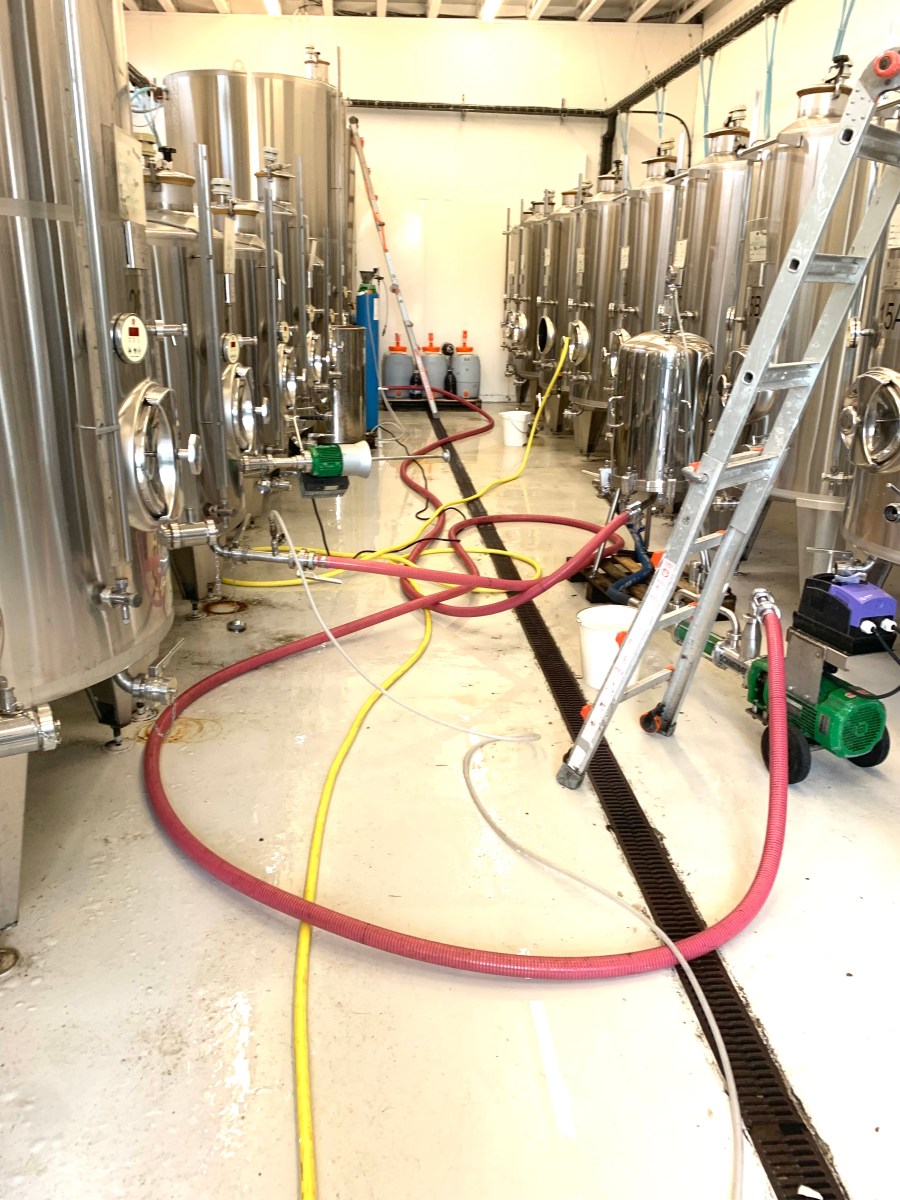Winemakers know that every wine is different and despite the title of this article, some wines take more than two weeks to bottle while others can take less, depending on the approach and target.
Most wineries, have their wines, protein and chill stable, for mainly aesthetic reasons and more than one technique can be applied. I will mention the most time and quality efficient techniques applicable to small wineries in my current experience. The most effective way is to work out the blending trials altogether and make a blending plan with a sequence of steps for all blends at the same time.
There are four key steps applicable to most wines:
- Blending
- Protein stability
- Filtration
- Tartaric stability.
Blending
In my opinion blending is one of the most beautiful experiences in winemaking and it is definitely my favourite. It’s an intimate moment with each component in the constant search for perfect harmony within a specific style, (see article in February 2023 edition of Vineyard).
Depending on the wine status based on influences such as: turbidity, evolution, oak, reductive or oxidative conditions etc, most components might not taste as they will in six months or three years time. They have to be seen in perspective and this comes down to experience. After finalising the blending plans, making a blend can take a few hours or two to three days per single wine. This obviously depends on how complex the blend is, tank space and set up. My suggestion is to mix the components by doing a “rack & blend” and have them as clear as possible for the next step.
Protein stability
Protein stability is normally achieved by using bentonite. However, there are wines containing enough tannins that don’t require bentonite for protein stability purposes: red wines in primis and white or rosé wines fermented/aged in new or semi-new barrels.
There are bentonites with different specifications some can be more effective, some remove more or less colour and some can settle faster based on wine, temperature, tank material and height. This stage is also compatible with the addition of finning and clarification agents.
One of the bentonite substances that I use takes about a week to settle achieving between 5 and 10 NTU. At this point the wine is ready for a coarse filtration; “rack & filter”, no need to rack first.
Wines which are clear enough and that don’t require bentonite or finning have no need to settle and can be filtered immediately after blending.
Filtration
Once you know your wine and your filters, you can choose how and when to start filtering.
Lenticular filtration, cross-flow, pad or another method it’s a choice based on volume, goal and budget as well as using the appropriate filtration modules, matrix, degree of retention, absorption etc.
If the wine is intended to be sterile filtered on bottling day, we have to make sure that the coarse filtration retains enough solids and achieves enough clarity (< 1 NTU), for the final filtration avoiding colmatation.
Due to the small blend volume, most single wines in the UK can be coarse filtered within a day.
Tartaric stability
Crystallisation inhibitors have been around for about two decades and have demonstrated their reliability against the potassium salts of tartaric acid. Most of them are negative charged, so the wine must be protein and colour stable before addition. (Please remember that lab trials are always advisable). Despite some opinions, they can also be used in rosé and red wine as long as you’ve done your homework on how to use them. Depending on what you choose to use, they can be added between 24 hours and 5 days before bottling if a final filtration is required otherwise, the wine is ready for bottling immediately. To gain time on this step you can run your laboratory trials soon after blending even on the blending trials.
I prefer to add the inhibitors after the coarse filtration, which always generate some losses, and on a perfectly clear wine. In this way, it’s easier to double check and identify potential post-addition instabilities by checking the NTU before bottling.
If you’d like to get in touch, I would be happy to hear from you. Tell me how or what you do differently, if you’re enjoying this article or perhaps make suggestions for future topics.
Salvatore Leone is an independent winemaking consultant in the UK for 10 years and I’m very excited to share my experiences.
For more like this, sign up for the FREE Vineyard newsletter here and receive all the latest viticulture news, reviews and insight




